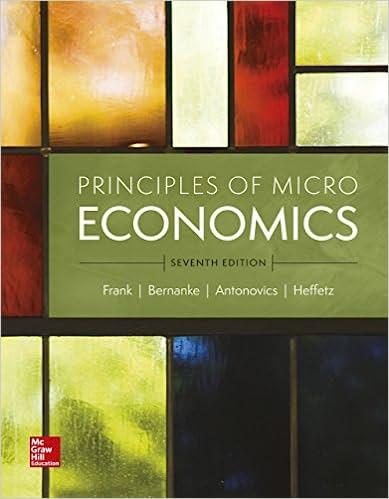Question
1. Compare and contrast the marginal utility approach with the indifference curve approach in understanding consumer behaviour. 2. State and explain with suitable diagrams the
1. Compare and contrast the marginal utility approach with the indifference curve approach in understanding consumer behaviour.
2. State and explain with suitable diagrams the law of deaman. What are the reasons for the downward slope of the demand?
3. How does the producer attain equilibrium under the iso-quant approach?
4. Discuss the role of time element in the determination of price and output under perfect competition with the help suitable diagrams.
5. Explain the liquidity preference theory of Interest. What is liquidity trap?
6. Graphically explain the economy's production possibility curve in terms of economic growth.
7. Explain various types of price elasticity of demand with the help of diagrams.
8. Describe the two conditions necessary for attaining equilibrium for a firm in the shortrun.
9. Discuss the conditions of price discrimination under monopoly.
10. Explain the innovation theory of profit.
11. What are the diseconomies of scale? Explain with illustrations
12. Discuss the different concepts of national income, How is national income estimated.
13. Compare and contrast the Classical and Keynesian Theory of income, output and employment.
14. Distinguish between quantitative and qualitative methods of credit control. Discuss quantitative methods elaborately.
15.Critically examine the principle of maximum social advantage.
16. Distinguish between cost-push and demand-pull inflation. Discuss the different effects of inflation.
17. If D=100-3p and S=50+2p calculate the equilibrium price and the quantity, When a specific tax of Rs. 3 per unit is levied calculate the new equilibrium price and the quantity.
18. Define the elasticity of the Total cost. Prove that the elasticity of the average cost is equal to the elasticity of the total cost minus one.
19. The long run cost functions of a firm is C=q3 - 4q2+8q. Prove that MC=AC at the minimum point of MC.
Peaches and nectarines are substitute goods, and both are produced under conditions of competitive long-run equilibrium. Joyce, a producer in the peach industry, discovers a technological breakthrough that only reduces the cost of producing peaches. Explain how the change in technology will affect each of the following for Joyce. (a) Quantity of peaches produced (b) Price of peaches (c) Short-run profits Now assume that all other peach-producing firms adopt the new technology. Explain how the adoption of the new technology will affect each of the following in the peach-producing industry. (d) Price of peaches (e) Quantity of peaches produced This new technology is not applicable to the production of nectarines. Explain how the changes that occurred in the peach industry will affect each of the following in the nectarine industry. (f) Price of nectarines (g) Quantity of nectarines
Step by Step Solution
There are 3 Steps involved in it
Step: 1

Get Instant Access to Expert-Tailored Solutions
See step-by-step solutions with expert insights and AI powered tools for academic success
Step: 2

Step: 3

Ace Your Homework with AI
Get the answers you need in no time with our AI-driven, step-by-step assistance
Get Started


